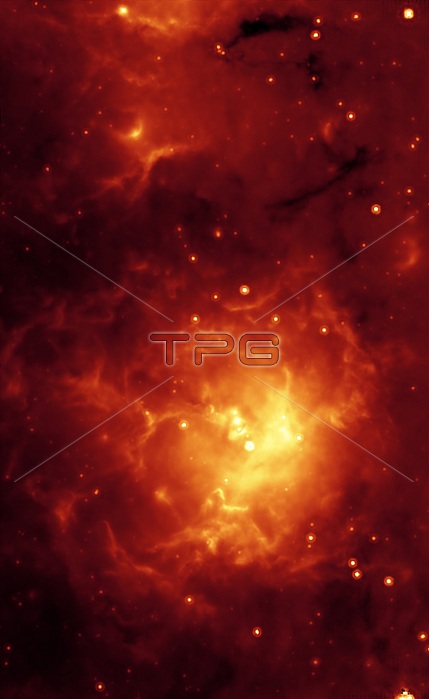
The glowing Trifid Nebula is revealed with a pseudo-color mid-infrared view from NASA's Spitzer Space Telescope. The Trifid Nebula is a giant star-forming cloud of gas and dust located 5,400 light-years away in the constellation Sagittarius. Where dark lanes of dust are visible trisecting the nebula in a visible-light picture, bright regions of star-forming activity are seen in the infrared images. The telescope uncovered 30 massive embryonic stars and 120 smaller newborn stars throughout the Trifid Nebula, in both its dark lanes and luminous clouds. The embryos are thought to have been triggered by a massive "type O" star, which can be seen as a white spot at the center of the nebula. Type O stars are the most massive stars, ending their brief lives in explosive supernovas. The small newborn stars probably arose at the same time as the O star, and from the same original cloud of gas and dust. Ten of the 30 massive embryos discovered by Spitzer were found in four dark cores, or stellar "incubators," where stars are born. This Spitzer image from the multiband imaging photometer (MIPS) specializes in detecting cool materials, and highlights the relatively cool core material falling onto the Trifid's growing embryos. This images uses data from MIPS to show 24-micron emissions in red.
| px | px | dpi | = | cm | x | cm | = | MB |
Details
Creative#:
TOP22316522
Source:
達志影像
Authorization Type:
RM
Release Information:
須由TPG 完整授權
Model Release:
N/A
Property Release:
No
Right to Privacy:
No
Same folder images:

 Loading
Loading